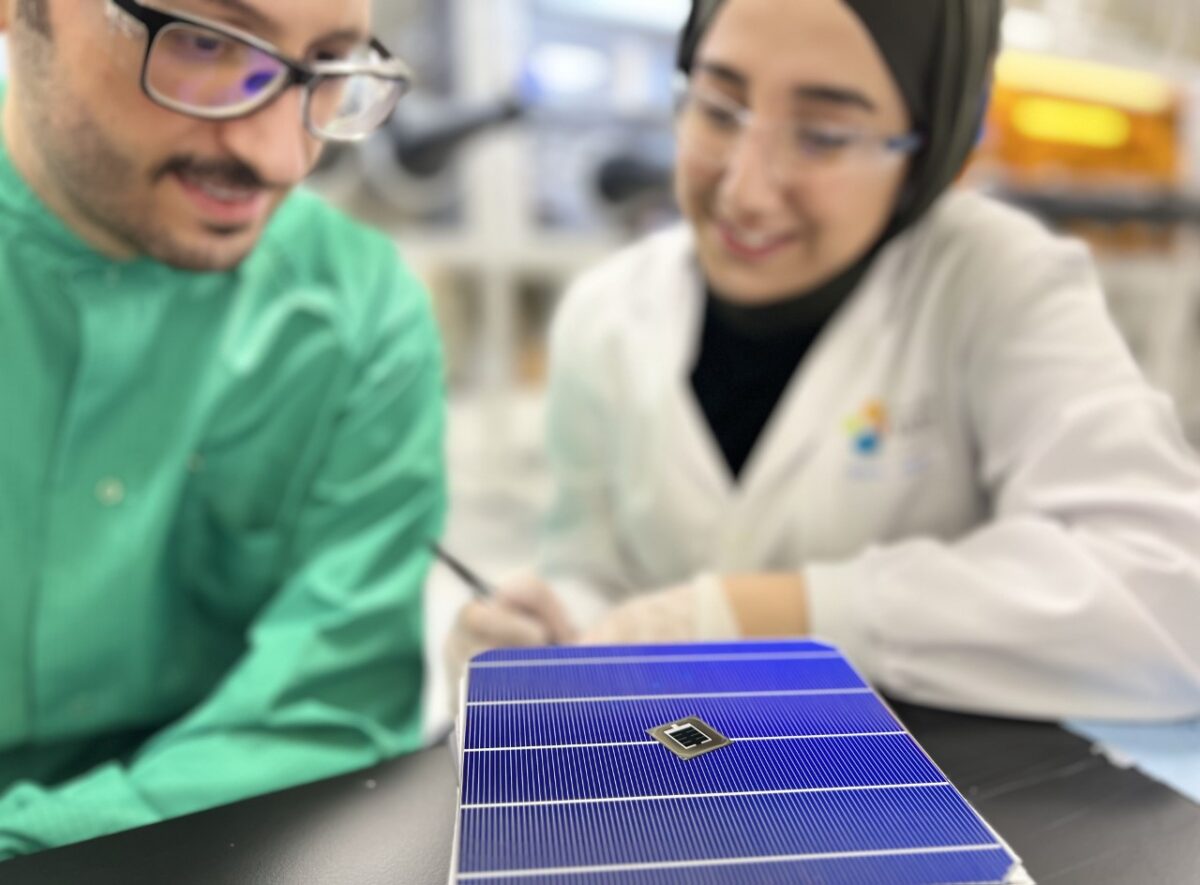Hamartia Antidote
ELITE MEMBER

- Joined
- Nov 17, 2013
- Messages
- 35,183
- Reaction score
- 30
- Country
- Location

KAUST claims 33.2% efficiency for perovskite/silicon tandem solar cell
The European Solar Test Installation (ESTI) has confirmed the results of King Abdullah University of Science and Technology's (KAUST) new perovskite/silicon tandem solar cell. KAUST researchers claim the tech is a step forward from other perovskite-silicon cells they have developed.
The European Solar Test Installation (ESTI) has confirmed the results of King Abdullah University of Science and Technology’s (KAUST) new perovskite/silicon tandem solar cell. KAUST researchers claim the tech is a step forward from other perovskite-silicon cells they have developed.
Scientists led by Saudi Arabia’s KAUST have achieved a power conversion efficiency of 33.2% for a perovskite-silicon solar cell. KAUST Professor Stefaan De Wolf made the announcement on the university's LinkedIn account.
“Glad to announce we obtained a certified power conversion efficiency of 33.2% for our monolithic perovskite/silicon tandem solars cells developed at the KAUST Solar Center,” he said. “With this, perovskite/silicon tandems are now the most efficient two-junction solar cell technology under standard illumination conditions, even better than III-Vs.”
The European Solar Test Installation (ESTI) has certified the result.
“The 33.2% efficiency was just added to the NREL chart,” he told pv magazine. “The cells are indeed a further improvement on our previous devices.”
In January, KAUST announced a power conversion efficiency of 28.1% for a perovskite-silicon tandem solar cell based on textured silicon wafers. In August 2022, it claimed a 26.2% efficiency for a monolithic perovskite-silicon tandem photovoltaic device.
In December 2021, KAUST researchers achieved a power conversion efficiency of 28.2% for a tandem solar cell with an area of around 1 cm2, based on an n-i-p perovskite stacked on top of a silicon heterojunction.
The same research group recently announced an inverted perovskite-silicon tandem solar cell with a 1 nm interlayer based on magnesium fluoride (MgFx) placed between the perovskite layer and the hole transport layer (HTL), in order to reduce voltage losses.
*The article was updated on April 13 to specify that the European Solar Test Installation (ESTI) has certified the result.


